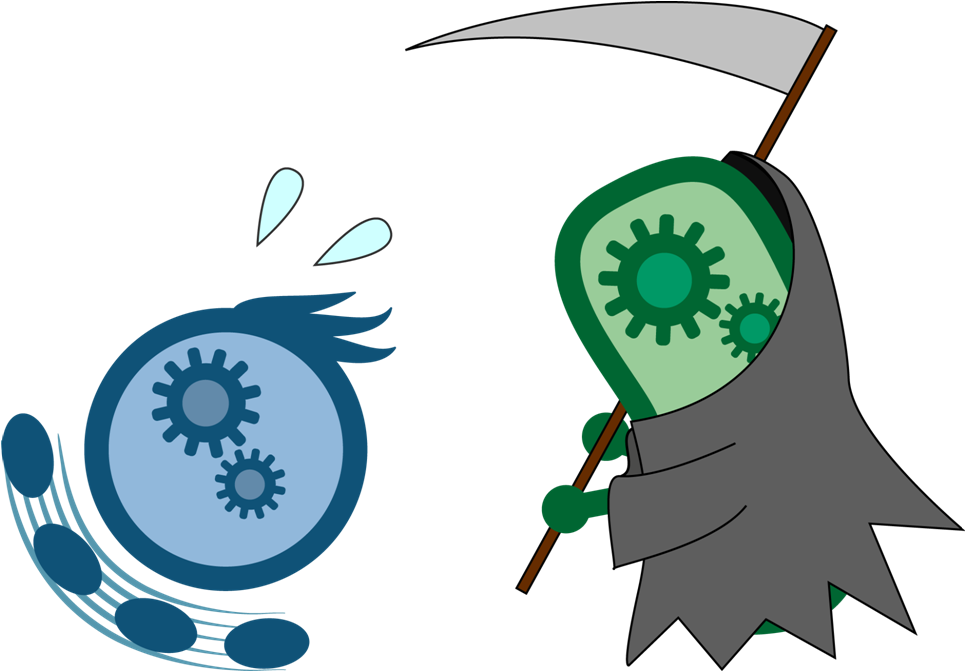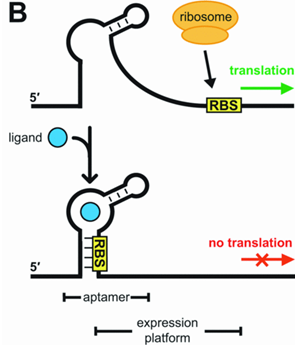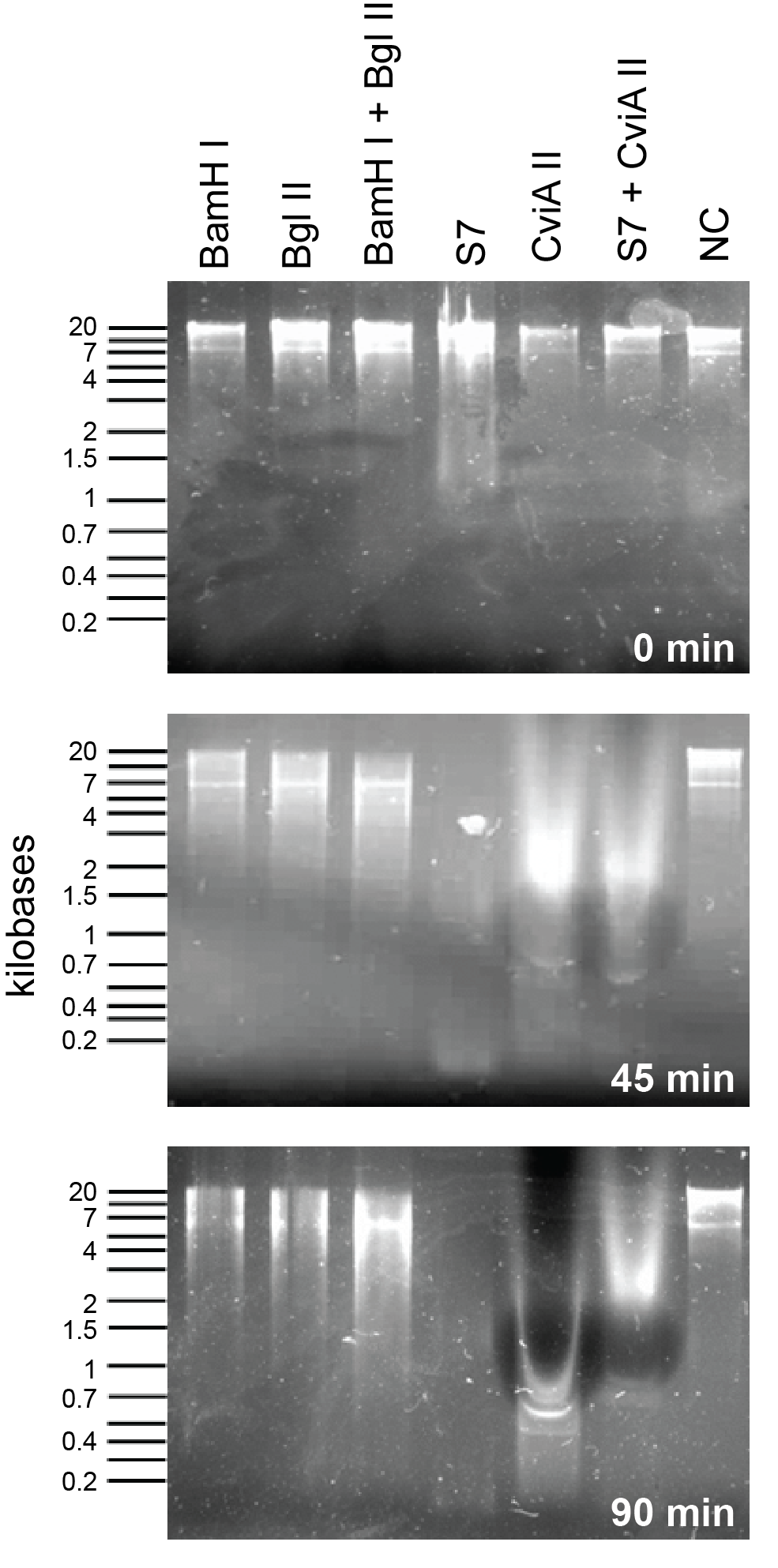Team:Calgary/Project/HumanPractices/Killswitch
From 2012.igem.org
Kevinm.huie (Talk | contribs) |
|||
| Line 2: | Line 2: | ||
TITLE=A Killswitch for Increased Security|CONTENT= | TITLE=A Killswitch for Increased Security|CONTENT= | ||
<html> | <html> | ||
| + | <a href="https://2011.igem.org/Team:Calgary">last year's electrochemical sensor</a> | ||
<h2>Purpose:</h2> | <h2>Purpose:</h2> | ||
<div align="justify"> | <div align="justify"> | ||
Revision as of 00:08, 29 September 2012


Hello! iGEM Calgary's wiki functions best with Javascript enabled, especially for mobile devices. We recommend that you enable Javascript on your device for the best wiki-viewing experience. Thanks!
A Killswitch for Increased Security
last year's electrochemical sensorPurpose:
Synthetic biology entails designing an organism to do a specific task. This involves genetic manipulation of the bugs and requires scientists to provide the bacteria with a selective advantage such as an antibiotic cassette which forces the bacteria to keep the gene of interest inside the cell. With such manipulation comes a valid “risk of accidental release” (Tucker and Zilinkas, 2006). Attempts have been made to address the concern regarding "accidental release". Some of these attempts include designing of lab strains, designing auxotrophes which cannot synthesize an important metabolite and designing killswitches. In order to contain our bug, we have designed a bioreactor which will have several in built safety mechanisms. Some of the methods of containment include creating a closed system for the bioreactor which minimizes the escape of bacteria. Additionally, we will also be treating the belt-skimmer with ultra-violet light which will ensure that there are no bacteria in the final product.
In the rare instance that the bacteria escapes, we have designed a killswitch such that the bacteria is only able to survive in specific environments allowing them to perform the tasks of decarboxylation, denitrification and desulfurization in our bioreactor. However, in case of these bacteria escaping, the lack of a metabolite and or the presence of a particular metabolite will activate the “kill genes” which will cause the bacteria to self destruct. The killswitch mechanism was put in our system as a safety measure in addition to the bioreactor to contain the synthetic bacteria.
History:
Scientists have been trying to develop methods to limit bacterial viability and growth outside of the lab environment. One of the most popular methods used to ensure the safety of bacteria used in the lab was the creation of lab strain bacteria such as DH5α and Top10. These bacteria are metabolically deficient and are unable to survive outside of the lab environment without very specific nutrients. Additionally, The Registry of Biological Parts also has several killswitches readily available that were submitted by previous iGEM teams.
The different types of killswitches include:
Toxin-antitoxin systems:
These systems usually insert antitoxin in the plasmid and toxin in the genome. Ideally if the bacteria lost the plasmid then the bacteria dies. The advantages of these types of system is that__________ and the caveat with these systems is that they do not prevent the bacteria from horizontally transferring the genetic material.
Auxotrophic marker
Auxotrophes are bugs that are unable to survive in the absence of a metabolite. These bugs are used widely in the lab. An auxotrophe is unable to synthesize an essential metabolite, often an amino acid. Therefore, it requires the presence of the said metabolite in order to survive. Often these amino acids are unavailable in the environment. Therefore, these bugs are unable to survive outside the laboratory environment. The limitations of using an auxotrophe for the purpose of our bioreactor is the cost associated with it. Given the size of our envisioned bioreactor, 100L+, auxotrophes would add a large cost to the system.
Inducible systems
Inducible systems generally consist of a regulatory element such as a promoter which is activated in the presence or absence of a metabolite. There is several kill genes inducible kill genes in the registry. Some of them include BamHI under the control of AraC promoter. The literature uses LacI promoter and the LacUV promoter as control elements. Some of the limitations of using an inducible system are the escaper bacteria mutating out either the kill gene or the regulatory element associated with the kill gene such as the promoter thereby blocking the expression of the kill gene. In order to combat this, researchers often create plasmids with multiple copies of the kill systems. This reduces the chances of mutation and also provides backup copies in case one of the promoters is mutated. Knudsen and Karlstorm suggest the use of a tightly controlled promoter to reduce the chances of mutation.
Design considerations:
In our design we had considered all three of the possibilities however considering the large increase in cost in the bioreactor if auxotrophic systems were used, we decided to explore different inducible systems. We considered using the AraC promoter (Bba_I0500) as well as the LacI promoter (Bba_R0010) with our kill genes. However, data suggests that both AraC as well as LacI promoters are both leaky. PUT DIAGRAM. Therefore, we explored four inducible systems which are new to the registry and are induced by inexpensive ligands such as magnesium, manganese, molybate salts and glucose. In order to make sure the systems are controlled well and the kill switch regulation is not leaky, we have added an additional control using the riboswitch.
A riboswitch provides post-transcriptional control of gene expression. A riboswitch is a small stretch of mRNA which binds to a ligand which increases or decreases the expression of the gene downstream.
Our Kill Genes
The principal mechanism behind our active killswitch system are exo and endonucleases which work in tandem to cause substantial degradation of the bacterial genome. The chance event of bacterial escape from the bioreactor into tailings ponds triggers the transcription of S7 micrococcal nuclease and CviAII endonuclease.
Nuclease assay to evaluate the nucleases present in the registry (BglII and BamHI):
To compare S7 and CviAII to the nucleases already present in the registry we did a nuclease assay with commercially available enzymes from New England Biolabs and an E. coli genomic prep. To see detailed protocol please link see here/link. As can be seen in Figure X, S7 starts acting almost immediately. Within 45 minutes both S7 and CviAII have chewed up the E. coli genome into small fragments whereas BamHI and BglII have sheared the genome into large fragments. Additionally, in 90 minutes, S7 and CviAII have sheared the genome into pieces <200 bp in size whereas there is no difference in the lanes with BglII and BamHI at 90 minutes compared to 45 minutes.
S7 micrococcal nuclease
CviAII restriction enzyme
CviAII is a restriction endonuclease that was sourced from the Chlorella virus PBCV-1 (REF PAPER). Our team selected this enzyme for three reasons.
Firstly, this enzyme recognizes the small four-base restriction site CATG wherein it cuts a staggered end between the A and C on the forward and reverse strands. This is advantageous for the design of our system because of the frequency of this short cut site in the E. coli genome. As opposed to the six base cutter BamHI system submitted by the 2007 Berkely team (BBa_I716462), the CviAII restriction site is to be 16 times more prevalent in the E. coli genome, which translates in finder degradation of the genetic material.
Secondly, the CATG cut site has the probability of being present in start codons of one quarter of genes in the E. coli genome. As such, coding genes will preferentially be selected with activation of CviAII; at this point, the exonuclease activity of S7 micrococcal nuclease can complete degradation of the gene element. Additionally, CviAII is able to cut Dam and Dcm methylated sites in the E. coli genome, and this translates into decreased selectivity of the enzyme.
Finally, the optimum temperature for CviAII activity is 23 degrees Celsius (REF PAPER). This value is relatively low and better suited to operation the cooler tailings water compared to other systems in the registry. For example, the 2007 Berkely BamHI system is optimized for 37 degrees Celsius and thus would be non-functional the tailings ponds. FIND SOME DATA OF TAILING WATER TEMP.
Regulation of our kill genes:
We have explored four different systems in our project. All of these systems fall under the umbrella of inducible kill gene systems. They are: Glucose repressible system, magnesium repressible system , manganese inducible system and the molybdate repressible system.
Molybdate co-factor protein regulation
 "
"


